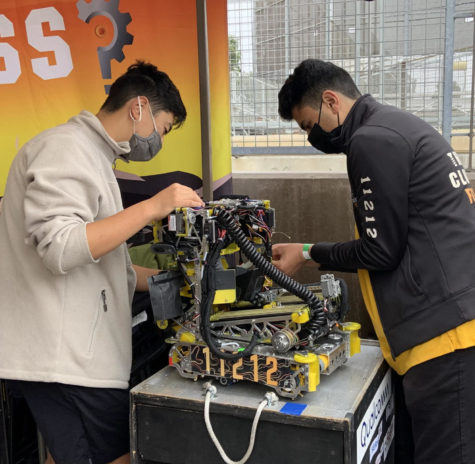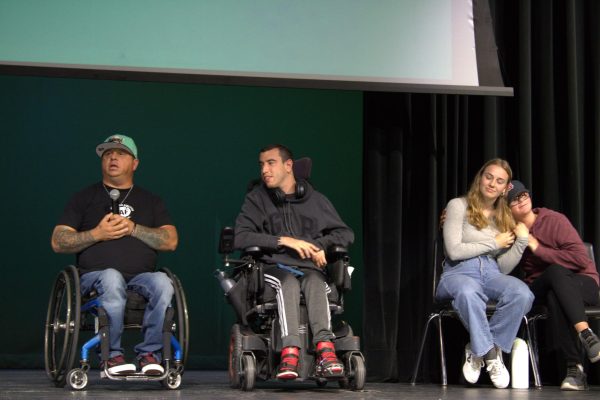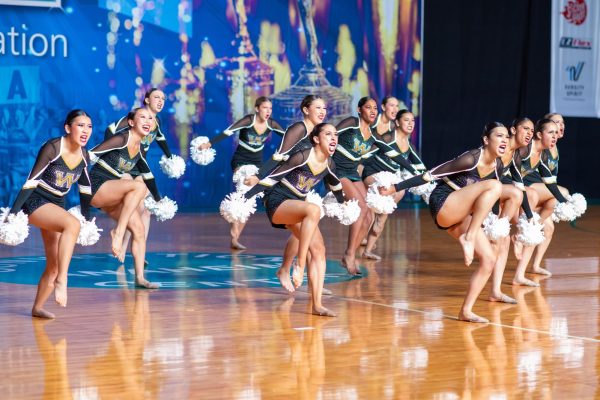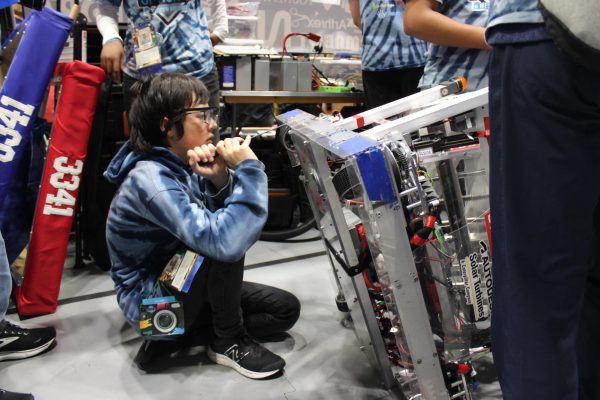FTC Team The Clueless places first at regionals
April 8, 2022

The robotics team The Clueless #11212 won the FIRST Tech Challenge (FTC) California-San Diego Regional Championship, March 26. The 15-member team will be moving on to the FIRST World Championship in Houston, April 20.
This year’s FTC challenge, Freight Frenzy, focuses on transportation sustainability. The robots carry “freight” in the form of balls, cubes and rubber ducks from their designated warehouse area to their shipping hub. Each match is played with four teams split into two groups called an alliance. Each match consists of a 30-second autonomous period where the robot executes pre-programmed code, followed by a two-minute driver-controlled period. In order to win, teams need to optimize their software and hardware to run as smoothly, consistently, and efficiently as possible.
The Clueless’s robot consists of a depositing system with a robot arm that can extend five feet in half a second, and dual intakes that are used to move freight rapidly and reliably. In addition to the hardware, the team also optimized the software.
“It’s only a few milliseconds you’re saving, but all the time adds up,” software lead PJ Wetherell (12) said. “[But], you can start your next [process] slightly earlier. Over time, those time-saves, they add up.”
These features allowed The Clueless to take home the regional championship, but the road to victory did not come without its challenges.
Their second of six qualification matches, their robot’s arm caught on the edge of the shipping hub, tipping it over and knocking it to the ground. This deduction led to them losing the second qualification match.
Right after the game, Wetherell rushed to implement code changes to fix the mistake.
“When I saw the hub flip over, I was like, ‘Oh no, the season’s over,’” Wetherell said. “[While] the code change itself was not very difficult—it’s only a few lines of code that needed to be changed in order to [fix] that functionality—I was definitely very nervous because if you have one run that was that bad, it’s really hard to come back [from it].”
The Clueless continued their winning streak throughout their two semifinal matches. It was official: The Clueless was moving on to the finals.
“It was definitely nerve-wracking because [our opponents] were a strong team,” team captain Toby Sagi (12) said. “However, I think we were still pretty confident because we believed that we were the better team. In a [competition] situation, you just have to think that way in order to perform that way.”
The finals consisted of three games. The first alliance to win two games won the tournament. Under this immense pressure, during their first finals match, their autonomous section failed and they lost.
“It’s very difficult not being able to do anything and see the work you put in being the determining factor of losing that match,” Wetherell said. “But the most important thing is that we put in a lot of time beforehand, so we know the system works. It’s just that sometimes there might be something that’s not working in a particular instance. It’s unfortunate, but it’ll work next time.”
Instead, The Clueless focused on performing the best that they could in the next match and won the second finals match, 267-171.
“Going into the second game, it was kind of like a do-or-die situation,” Sagi said. “If we lose again, then we’ve lost, but if we win, we get to play another game to figure out who gets to advance to worlds. It was definitely high stress, but we just had to trust in ourselves that we could play the game and play it better than the opposing alliance.”
By the third and last game of the finals, both teams were desperate to win. With one win each, both alliances were neck to neck and hoping to secure the third match.
“The third and final match was probably the most nerve-wracking,” Driver Hudson Kim (9) said. “Basically, it was a game of who could cycle faster, [in other words] how quickly does it take you to go into the warehouse, score [freight], and come back.”
Because of The Clueless’s optimized design, they had a fast cycle time of three to five seconds, and their chance of winning was looking good. However, during the third match, The Clueless’s alliance team hit the shared shipping hub, which is a major penalty. This would be a 30-point deduction to their score.
Tensions were especially high since almost a third of the team were seniors. This was their last chance to qualify for worlds.
At the end of the third match, the score was 304-271. The Clueless had won.
“I was ecstatic when we qualified [for worlds],” Wetherell said. “This is the hardest I think I’ve ever worked for a robotics season: multiple 4 a.m. nights in the garage to get autonomous to work, to make sure the robot was ready. To have it all pay off is extremely gratifying.”








